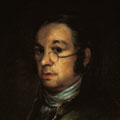History.--The Swedish chemist, Scheele, in 1774, while examining the action of hydrochloric acid on peroxide of manganese, first noticed this element. He called it dephlogisticated muriatic acid. It was afterwards, by the French nomenclaturists, termed oxygenated muriatic acid, conceiving it to be a compound of oxygen and muriatic acid. This view of its notice was corrected by Sir H. Davy (in 1809), who gave it the present name. In 1840-41, this gas vas employed for accelerating the operation of light upon the iodized Daguerreotype plate.








